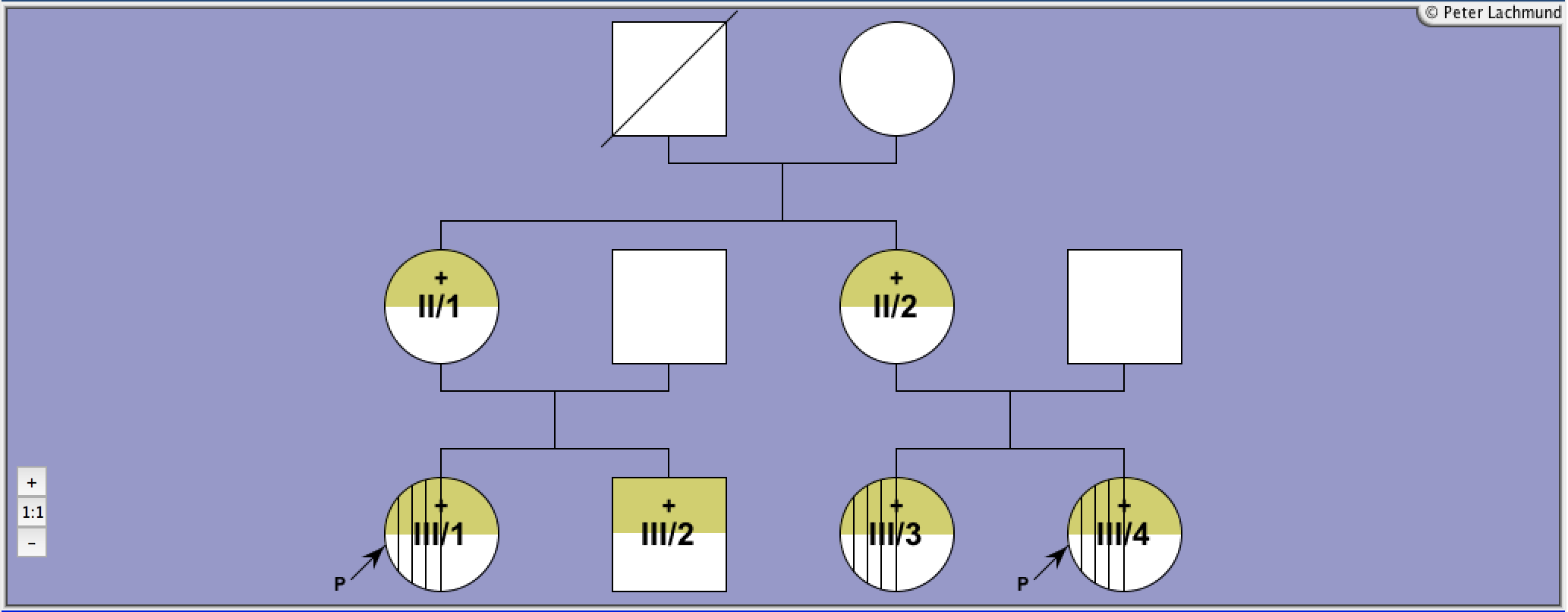Details Of Published TSH Receptor Mutation
Asp 617 Tyr
c.1849G>TConstitutively Activating TSH Receptor Mutation
Type
gain
Manifestation
family
Exon
10
Legend:

Male

Female

Unknown

Deceased
+
Mutation
-
No Mutation

Hyperthyroidism
(Heterozygous)
(Heterozygous)

Goiter

Relapse
P
Index Patient
Molecular Characteristics:
default
Clinical Features:
diagnosis:
III/1: 20yr (index patient), goiter
III/4: 21yr (index patient), goiter
III/2: 20yr
III/3: 24yr
II/1: 55yr
II/2: 48yr
* based on 1 activating familial germline mutation investigated by Nishihara et al. 2007
III/1: 20yr (index patient), goiter
III/4: 21yr (index patient), goiter
III/2: 20yr
III/3: 24yr
II/1: 55yr
II/2: 48yr
* based on 1 activating familial germline mutation investigated by Nishihara et al. 2007
Treatment:
III/1, III/4: antithyroid drugs
II/2: near-total TE at 48yr
II/2: near-total TE at 48yr
Functional Characteristics:
cAMP
(basal)
(basal)
cAMP
(TSH)
(TSH)
IP
(basal)
(basal)
IP
(TSH)
(TSH)
TSH-Binding
Cell Surface Expression
Prevalence
LRA
Ref
2.4
0.9
0.9
0.8
0.6
1
1
Legend:
cAMP (basal): basal in vitro cAMP production of mutant over wild-type TSHR
cAMP (TSH): maximal in vitro cAMP production of mutant over wild-type TSHR
IP (basal): basal in vitro IP production of mutant over wild-type TSHR
IP (TSH): maximal in vitro IP production of mutant over wild-type TSHR
TSH-binding: maximal TSH-binding compared to the wild-type TSHR
Cell surface expression: cell surface expression of mutant compared to WT-TSHR
LRA: linear regression analysis (LRA) of constitutive activity as a function of TSHR expression determined by 125I-bTSH binding or FACS analysis compared to the wild-type TSHR
Prevalence: Prevalence of (somatic and germline) activating mutations*
Ref: Reference for functional characterization
Child: Found in children.
Reference 1:
Nishihara et al.
Endocr J. 54: 927-34
A novel thyrotropin receptor germline mutation (Asp617Tyr) causing hereditary hyperthyroidism.
2007
Reference 2:
Nishihara, Eijun, et al.
Thyroid
Prevalence of thyrotropin receptor germline mutations and clinical courses in 89 hyperthyroid patients with diffuse goiter and negative anti-thyrotropin receptor antibodies.
2014

